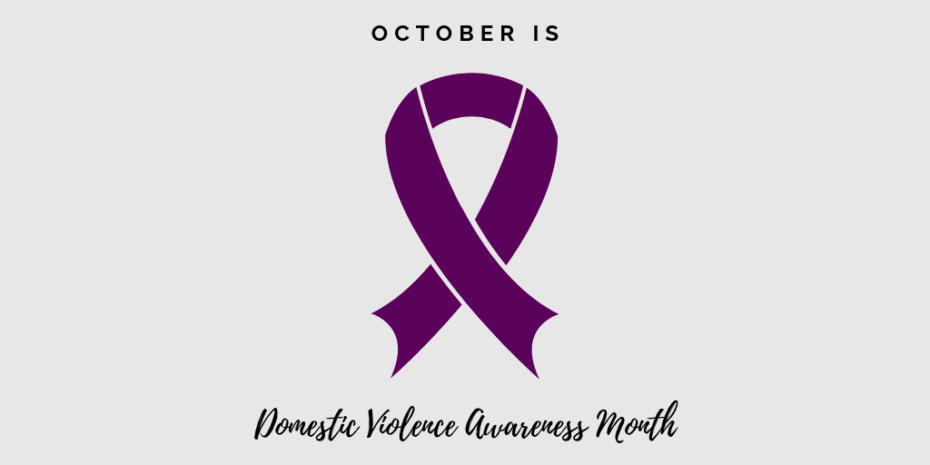20,000 calls a day are placed to domestic violence hotlines. While you may know that October is National Domestic Violence Awareness Month, do you know what you can do to help your local programs that serve domestic violence survivors?
This month, we had the privilege of talking with several domestic violence programs to learn about their greatest needs, obstacles that exist in serving clients, misconceptions people have, and innovative ways to raise funds.
Below are misconceptions and key insights they shared in order to help communities understand how best to serve survivors of domestic violence.
Misconception #1: The primary purpose of domestic violence programs is to provide shelter.
The majority of services offered by programs are community-based. The goal is not to have everyone reside in emergency housing, but to provide survivors with the resources and tools available to them. Services are on-going and continually available to survivors, regardless of whether or not they are being housed.
Misconception #2: Grant funding pays for everything.
While many programs have been fortunate enough to receive grants federally through their state or locally through their county or city, there are limitations to what the funding can cover. Flexible funding is a need as many of the client’s programs require assistance with bills, moving costs, and transportation. Being able to aid clients in meeting a need allows advocates to prevent a survivor from returning to a domestic violence situation in order to have that need met.
Misconception #3: The greatest need is housing.
While housing is always necessary, the greatest need many advocates face is covering expenses not funded by grants that are crucial for a survivor moving forward, including high utility bills, car repairs, and transportation. If a survivor secures a job but needs a car repair, without the car repair, they can’t travel to and from their job or provide for themselves and their children. As a result, they may see returning to their previous situation as their only option. Having the funds to be able to immediately meet needs can make a tremendous difference.
Misconception #4: It’s easy to reintegrate.
The perception is often that once a person leaves a domestic violence situation, they will obtain housing and a job and begin their new life easily. Reintegration, however, is difficult; many survivors are uprooted, have left everything they own behind, are not sure who to trust, and have new responsibilities. The feeling of safety, even if they are in emergency housing, is not always present. Survivors need ongoing support as they transition into their new life.
Misconception #5: Only certain demographics can receive services.
Domestic violence can happen to anyone, regardless of background or socioeconomic status. It is often believed that someone who has resources, financial or other, cannot receive services because of financial thresholds. The reality is anyone at any time can seek services.
Misconception #6: If a program offers services to children, they also offer childcare.
Many programs offer services to children, but this does not mean they provide childcare. Even though someone may have secured a job and have transportation needs met, if they have young children, then they need affordable childcare. While social services can provide assistance with subsidies, childcare may take time to secure, and in the interim, a survivor has no options for where to place her children. Flexible and affordable childcare is greatly needed and often an obstacle advocates face.
Misconception #7: Programs can only be funded by grants and donors.
While much funding is raised through donations and grants, shelters are finding innovative ways to source funding. Programs can provide economic empowerment opportunities by establishing businesses that employ survivors of domestic violence, such as baking businesses that teach professional baking and kitchen management skills needed to gain sustainable employment. Programs may also own rental properties that they lease at a fair market rate in order to contribute to funding. Other products, such as stationary, can be created and sold as well.
Misconception #8: Programs can only utilize item donations.
While wish lists and tangible item donations are always helpful, many program needs extend beyond these. Others include career opportunities for survivors, maintenance services, and legal assistance, both to the shelter and the clients.
For example:
- Donating landscaping services can help with costs not covered by grants.
- Career opportunities with local businesses for apprenticeship and employment that can provide a career path forward and not simply a job with no upward mobility.
- Attorneys for specific issues such as zoning compliance for a new building, assisting clients in understanding lease agreements, and custody.
Domestic violence programs across the country are providing needed services and resources to clients in their areas. Many programs share the most needed items, which include diapers, wipes, hygiene products, etc. Consider reaching out to your local shelter to learn what their greatest needs are, what obstacles they face, and how your community can help meet their needs.
If you or someone you know needs help, contact the National Domestic Violence Hotline (1-800-422-4453)
Special thanks to Help & Emergency Response, Inc., Samaritan House, and the YWCA of Hampton Roads for contributing to this post.

